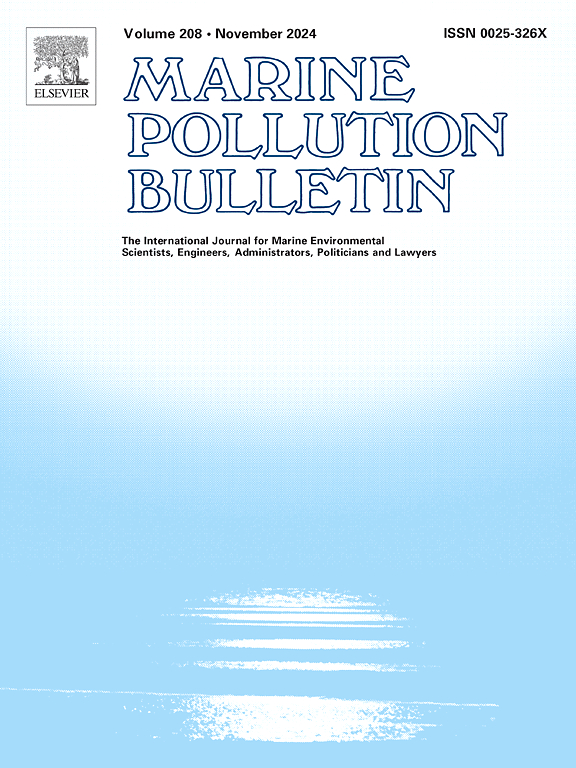Polystyrene acts as a vector for the pharmaceutical, gemfibrozil, to bay scallop larvae (Argopecten irradians)
IF 5.3
3区 环境科学与生态学
Q1 ENVIRONMENTAL SCIENCES
引用次数: 0
Abstract
Both microplastics and gemfibrozil, a pharmaceutical used to treat heart disease, can be detected globally in coastal environments. Results from these experiments indicate that 15 μm polystyrene beads can be a vector for gemfibrozil to D-stage bay scallop larvae (Argopecten irradians) at low environmental concentrations (0.3 ng/L). After a 24-h acute exposure experiment, mortality rates were highest in the treatment with polystyrene beads with sorbed gemfibrozil, especially at the lowest concentrations of sorbed gemfibrozil. The lipid index (lipid area: body area) was significantly lower in the polystyrene beads with sorbed gemfibrozil than in all other treatments and controls. Additionally, a significant negative relationship between the lipid index and the gemfibrozil concentration on the polystyrene beads supports the conclusion that polystyrene can function as a vector for gemfibrozil to bay scallop larvae. After the acute exposure, the larvae were moved to clean water and raised for seven days till pediveliger development began. Continued effects on mortality, larval size and the lipid index were observed over the grow-out indicating the impact of microplastic as a vector even for short exposures at environmentally relevant concentrations of gemfibrozil on the survival and development of bay scallop larvae.

聚苯乙烯作为一种载体,将药物吉非罗齐(gemfibrozil)带到海湾扇贝幼虫(Argopecten irradians)体内。
微塑料和用于治疗心脏病的药物吉非罗齐在全球沿海环境中都可以检测到。实验结果表明,在低浓度(0.3 ng/L)条件下,15 μm聚苯乙烯微珠可作为吉贝齐对d期海湾扇贝幼虫(Argopecten辐照)的载体。在24小时急性暴露实验后,用吸附的吉非罗齐处理聚苯乙烯珠的死亡率最高,特别是在吸附的吉非罗齐浓度最低的情况下。脂质指数(脂质面积:体面积)在吸附了吉非罗齐的聚苯乙烯球中显著低于所有其他处理和对照组。此外,脂质指数与聚苯乙烯珠粒上的吉非菲齐浓度呈显著负相关,支持聚苯乙烯可以作为吉非菲齐感染海湾扇贝幼虫的载体。急性暴露后,将幼虫移至清水中饲养7天,直到幼虫开始发育。在生长过程中观察到对死亡率、幼虫大小和脂质指数的持续影响,表明微塑料作为载体,即使在与环境相关浓度的吉非菲齐下短暂暴露,也会对海湾扇贝幼虫的生存和发育产生影响。
本文章由计算机程序翻译,如有差异,请以英文原文为准。
求助全文
约1分钟内获得全文
求助全文
来源期刊

Marine pollution bulletin
环境科学-海洋与淡水生物学
CiteScore
10.20
自引率
15.50%
发文量
1077
审稿时长
68 days
期刊介绍:
Marine Pollution Bulletin is concerned with the rational use of maritime and marine resources in estuaries, the seas and oceans, as well as with documenting marine pollution and introducing new forms of measurement and analysis. A wide range of topics are discussed as news, comment, reviews and research reports, not only on effluent disposal and pollution control, but also on the management, economic aspects and protection of the marine environment in general.
 求助内容:
求助内容: 应助结果提醒方式:
应助结果提醒方式:


